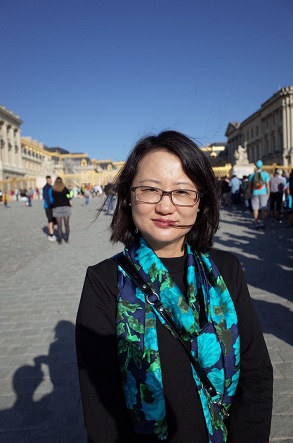
1994. 9-1998. 7年在中国农业大学植物营养系攻读学士学位;1998. 9-2001. 7在中国农业大学植物营养系攻读硕士学位(导师:李春俭教授);2001. 7-2004. 7在德国维尔茨堡大学植物所攻读博士学位(导师:Wolfram Hartung教授);2004. 7- 2006. 2在该所作博士后;2013. 9- 2014. 7在哈佛大学作博士后研究。在德国读博士期间,荣获中国国家留学基金管理委员会颁发的首届“国家优秀自费留学生奖学金”。2006年开始在bat365在线唯一官网登录官网工作。2012年获得“霍英东青年教师奖”。
■教学工作:主讲本科生课程《植物生理学》和《植物生理学实验》以及研究生课程《植物生理分子基础》。
■科研工作: 主要从事根际促生细菌提高植物抗旱和抗盐性的生理机制方面的研究。在师大工作期间,在 Journal of Experiment Botany、Plant and Soil、Functional Plant Biology、Physiologia Plantarum等期刊上共发表SCI文章13篇.
■Li S, Jiang F, Han Y, Gao P, Zhao H, Wang Y, Han S (2018). Comparison of nitrogen uptake in the roots and rhizomes of Leymus chinensis. Biologia Plantarum 62 (1): 149-156.
■Wang QY, Dodd IC, Belimov AA, Jiang F (2016). Rhizosphere bacteria containing 1-aminocyclopropane-1- carboxylate deaminase increase growth and photosynthesis of pea plants under salt stress by limiting Na+ accumulation. Functional Plant Biology, 43, 161–172. http://dx.doi.org/10.1071/FP15200.
■Jiang F, Chen L, Belimov AA, Shaposhnikov AI, Gong F, Meng X, Hartung W, Jeschke DW, Davies WJ, Dodd IC (2012). Multiple impacts of the plant growth promoting rhizobacterium Variovorax paradoxus 5C-2 on nutrient and ABA relations of Pisum sativum. Journal of Experimental Botany 63(18): 6421–6430.
■Jiang F, Jeschke WD, Hartung W, Cameron DD (2010). Interactions between Rhinanthus minor and its hosts: A review of water, mineral nutrient and hormone flows and exchanges in the hemiparasitic association. Folia Geobotanica. 45 (4), 369-385.
■Jiang F, Jeschke WD, Hartung W, Cameron DD (2008 a). Mobility of Boron-polyol complexes in the hemiparasitic association between Rhinanthus minor and Hordeum vulgare: the effects of nitrogen nutrition. Physiologia Plantarum 134, 13-21.
■Jiang F, Jeschke WD, Hartung W, Cameron DD (2008 b). Does legume nitrogen fixation underpin host quality for the hemiparasitic plant Rhinanthus minor? Journal of Experimental Botany 59 (4), 917-925.
综述
■Jiang F, Hartung W (2008). Long distance signalling of abscisic acid (ABA) - the factors regulating the intensity of the ABA-signal. Journal of Experimental Botany 59 (1), 37-43.